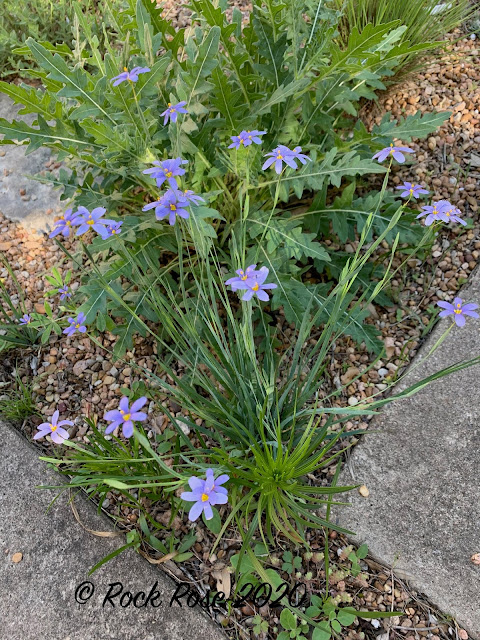Here are some of my first flower experiences this week and most of them natives.
First I saw the bud then overnight a flower on the Ladyfinger cactus, Echinocereus pentalophus. These flowers last for at least 3 days and usually arrive in succession.
The blue gilia, Giliastrum rigidulum. More commonly found in west Texas but I found one small patch growing on my lot and was successful in moving it to a place where I can see it and enjoy its beauty. It is almost at eye level so cannot be missed. It usually opens in the afternoon. Do you see the weevil? Not the dreaded agave weevil though.
Blue-eyed grass, Sisyrinchium angustifolium, seeds among the gravel and between the pavers. As does the Engelmanns daisy which has seeded alongside.
the pink evening primrose, Oenothera speciosa. Oh! Yes, it will run wild but that' fine. A quick pull here and there will keep it under control.
Everyone else may be able to grow the spiderwort, Tradescantia sp with ease. For me it is a rare event.
What's that I see through the shower window? It's the first blooms of the Anacacho orchid tree, Bauhinea lunarioides.
And the cross vine, Bignonia capreolata. has found tis way 20' from the mother plant.
And I have a mental block on what this plant is called. Help me out will you, please? Update. Thanks to Lyn for the id of Pavonia lasiopetala if I remember the species name correctly.
And wood sorrel, Oxalis.sp. For some it is a weed, for me I am happy to have just a few flowers in this shady corner.
Oh! How I love that morning, spring-time stroll around the garden. There will be more tomorrow, I'm sure.


















































